Séminaire CIVIS-MFO “Social Media Discourse Analysis”
31 mars 2022 – 16:30 – 18:30 (UTC+1)
Faculté ALLSH – Salle de colloques 2 – Bâtiment T1 Pôle multimédia
et en ligne avec Zoom
Conférence de Lieven VANDELANOTTE (Université de Namur, Institut NaLTT & KU Leuven, Research group FunC) : “Labelling memes as an emerging discourse genre”
Discutant : Grégoire LACAZE (Aix-Marseille Université, LERMA)
Résumé de la conférence :
We can’t imagine the Internet today – and social media platforms especially – without Internet memes (e.g. Shifman 2014, Milner 2016). These ubiquitous image-text combinations pair recognizable but modifiable forms with consistent meanings and contexts of use, allowing communicators to quickly bring across viewpoints and elicit reponses. Building on humorous forms of indirectness or incongruity, they parcel up messages and stances in more attractive, playful and therefore more impactful ways than just words.
This talk will first review some of the findings from research adopting a broadly constructional approach to Internet memes (e.g. Dancygier & Vandelanotte 2017, Zenner & Geeraerts 2017, Bülow et al. 2018, Vandelanotte 2021). One of the main strands in this research has focused on exploring how, why and to what extent Internet memes can be considered as multimodal types of constructions, building on and expanding various linguistic constructions and integrating (to different degrees) images into the construction. Another prominent focus concerns the meaning-making mechanisms used, including framing (Fillmore 1982, 1985) and simile (Dancygier & Sweetser 2014, Lou 2017, Harding 2017), and the viewpoint arrangements – sometimes quite complex – which memes can profile (Dancygier & Vandelanotte 2016, 2017).
Past work has also invoked the notion of genre in analyses of memes, for instance in terms of the emergence of an Internet meme (Wiggins & Bowers 2015); in examples of genre-based argument omission (Ruppenhofer & Michaelis 2010) in a particular meme family (Dancygier & Vandelanotte 2017); or in applying the notion of presentational templates defining discourse genres (Östman 2005, Antonopoulou & Nikiforidou 2011) to Internet memes (Vandelanotte 2021). Against this background, the second part of this talk focuses on the emerging genre of labelling memes. In typical labelling memes, words or phrases are superimposed onto different parts of a holistic scene in a picture, to serve as guides to the intended figurative interpretation of the scene. In one fairly common creative extension, the labels themselves are again images, superimposed onto the main image. Some labelling memes may be one-offs, too complex to become entrenched to any degree and subsequently re-used and modified, while others have become firmly established and continue to circulate and spread across new iterations and variations (e.g. the distracted boyfriend meme, the “Is this a pigeon?” meme).
The labelling mechanism, as an abstract constructional schema separate from specific instantiations, has undeniably acquired a considerable popularity in social media interactions. Indeed, particular viral pictures may very rapidly elicit scores of (sometimes short-lived) labelling responses – in creative competitions akin to verbal duelling (Partington 2006: 171f) – and viral events may instantly be responded to with various labelled pictures. More strikingly, perhaps, institutions such as the John Hopkins Bloomberg School of Public Health and the EU Commission have recently turned to labelling short clips from existing films in order to communicate messages around the covid booster vaccination programme and the EU’s Digital Services Act respectively. Using labelling in this way was clearly perceived by these institutions as an effective way to communicate viewpoints and persuade audiences. Analysis of core cases and creative extensions from the prototype will demonstrate the meaning-making potential of labelling memes as an emerging genre.
References
Antonopoulou, Eleni & Kiki Nikiforidou. 2011. Construction grammar and conventional discourse: A construction-based approach to discoursal incongruity. Journal of Pragmatics 43: 2594-2609.
Bülow, Lars, Marie-Luis Merten & Michael Johann. 2018. Internet-Memes als Zugang zu multimodalen Konstruktionen. Zeitschrift für Angewandte Linguistik 69: 1-32.
Dancygier, Barbara & Eve Sweetser. 2014. Figurative Language. Cambridge: Cambridge University Press.
Dancygier, Barbara & Lieven Vandelanotte. 2016. Discourse viewpoint as network. In Barbara Dancygier, Wei-lun Lu & Arie Verhagen (eds), Viewpoint and the Fabric of Meaning: Form and Use of Viewpoint Tools across Languages and Modalities. Berlin: De Gruyter Mouton.
Dancygier, Barbara & Lieven Vandelanotte. 2017. Internet memes as multimodal constructions. Cognitive Linguistics 28 (3): 565-598.
Fillmore, Charles J. 1982. Frame semantics. In The Linguistic Society of Korea (ed.), Linguistics in the Morning Calm. Seoul: Hanshin Publishing Co., 111-137.
Fillmore, Charles J. 1985. Frames and the semantics of understanding. Quaderni di semantica 6 (2): 222-253.
Harding, Jennifer Riddle. 2017. Similes, Puns, and Counterfactuals in Literary Narrative. London: Routledge.
Lou, Adrian. 2017. Multimodal simile: The “when” meme in social media discourse. English Text Construction 10 (1): 106-131.
Milner, Ryan M. 2016. The World Made Meme: Public Conversations and Participatory Media. Cambridge (MA): MIT Press.
Östman, Jan-Ola. 2005. Construction discourse: A prolegomenon. In Jan-Ola Östman & Mirjam Fried (eds.), Construction Grammars. Cognitive Grounding and Theoretical Extensions, 121-144. Amsterdam & Philadelphia: John Benjamins.
Partington, Alan. 2006. The Linguistics of Laughter: A Corpus-Assisted Study of Laughter-Talk. London: Routledge.
Ruppenhofer, Josef & Laura A. Michaelis. 2010. A constructional account of genre-based argument omissions. Constructions and Frames 2 (2): 158-184.
Shifman, Limor. 2014. Memes in Digital Culture. Cambridge, Mass.: The MIT Press.
Vandelanotte, Lieven. 2021. Creative constructs, constructions, and frames in Internet discourse. Constructions and Frames 13 (1): 160-191.
Wiggins, Bradley E. & G. Bret Bowers. 2015. Memes as genre: A structurational analysis of the memescape. New Media & Society 17 (11): 1886-1906.
Zenner, Eline & Dirk Geeraerts. 2018. One does not simply process memes: Image macros as multimodal constructions. In Esme Winter-Froemel & Verena Thaler (eds), Cultures and Traditions of Wordplay and Wordplay Research. Berlin: De Gruyter Mouton. 167-193.
Inscription à la diffusion Zoom :
https://univ-amu-fr.zoom.us/meeting/register/tJIrdOyppzIiGdAnwoL5jSyjEfCzFHjtnSYq


